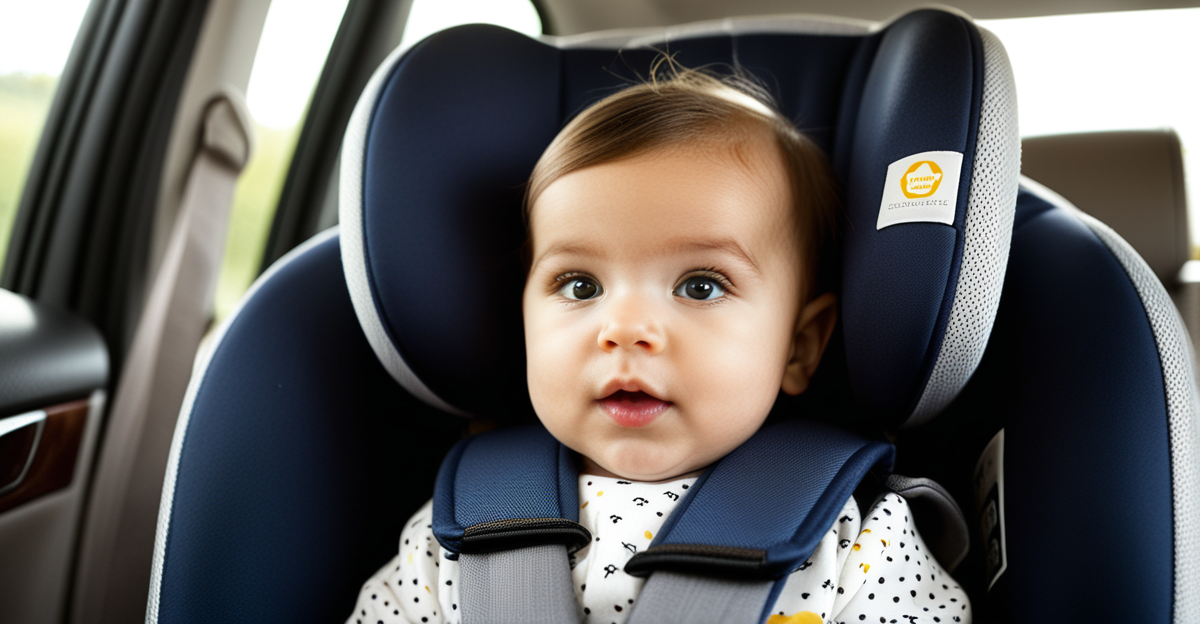Overview of UK Car Seat Regulations
The historical context of UK car seat regulations reveals a gradual enhancement of standards to ensure infant road safety. Initially, car seat laws were minimal, but over time, they have evolved significantly. This evolution reflects a growing acknowledgment of their importance, guided by data and research highlighting the vulnerability of children on the road.
Adhering to UK car seat laws is crucial, as non-compliance can considerably jeopardise child safety. These regulations not only save lives but also reduce the risk and severity of injuries in road incidents. Ensuring that the proper seats are used according to age, size, and weight is a fundamental step parents and guardians must take.
Topic to read : 10 Effective Strategies for UK Drivers to Lower Their Car’s Carbon Impact
The current legal standards in the UK dictate several compliance requirements. For children, this includes the mandatory use of car seats or booster cushions until they reach 135 cm in height or reach 12 years of age, whichever comes first. These regulations mandate all newly manufactured car seats conform to the latest safety standards to ensure maximum protection for children. Therefore, staying informed about the evolving laws is paramount for all caregivers and parents aiming to fulfil their responsibilities.
Types of Car Seats
When navigating the landscape of child safety, car seat types play a crucial role. Understanding the distinct categories is vital for ensuring the utmost safety and comfort for young passengers.
In the same genre : Ultimate UK Road Trip Prep Guide: Expert Tips to Ready Your Car for an Unforgettable Adventure
Infant Car Seats
Infant car chairs are designed specifically for newborns and young babies. These rear-facing seats offer optimal protection and are suitable from birth up to around 13 kg (approximately 12 months old). The rear-facing position is crucial in distributing the force of a collision away from the infant’s head and neck, offering enhanced safety during impact.
Toddler Car Seats
Once infants exceed the weight or height limits of their initial car seats, transitioning to convertible car seats for toddlers becomes necessary. These seats are versatile, often starting as rear-facing and then converting to forward-facing as the child grows, accommodating up to 18 kg (around 4 years old). This flexibility ensures prolonged use through multiple growth stages, ensuring children remain safely secured.
Booster Seats
Booster seats are another essential category, coming into play when a child has outgrown the toddler stage but isn’t yet ready for regular seat belts. They elevate the child to allow adult seat belts to fit snugly, protecting their upper body in the event of an accident. Booster seats are typically suitable for children from 15 kg up to 36 kg, or until they reach 135 cm in height, providing a bridge to regular seatbelt use.
Age and Weight Guidelines
Navigating the seas of car seat safety begins with understanding the specific age guidelines and weight guidelines associated with each car seat type. These guidelines ensure not only compliance but also the best possible protection for your little ones.
Detailed Age Brackets
Starting with the youngest passengers, infant car chairs are the safest option for newborns to around 12 months, or until they weigh approximately 13 kg. These seats provide a rear-facing protective barrier that is crucial during any sudden stops or impacts. As children grow, they transition to convertible car seats, which usually accommodate toddlers from about 9 kg to 18 kg, a period that spans from around 9 months to 4 years of age. Finally, booster seats become important for older children, typically from 15 kg up until they reach a height of 135 cm or are 12 years old. Properly following these guidelines minimizes risks and ensures a smooth journey through early childhood.
Weight Limits
The specifics of weight limits can be as critical, if not more so, than age alone when choosing an appropriate car seat. Weight thresholds determine when a child is ready to transition from one type of seat to another, ensuring that the seat’s protective features are effectively engaged. Each seat type is designed with a particular weight range in mind, maintaining the integrity of its safety features.
Transitioning Guidelines
Understanding the key factors for transitioning between seats is essential for continued compliance and infant road safety. Parents should regularly check both weight and height measurements to ensure their child is neither too small nor too big for their current seat. This vigilance ensures that you are consistently meeting compliance requirements while optimizing safety at every stage.
Safety Tips for Parents
Ensuring the safety of your child while travelling in a vehicle requires attention to car seat safety tips. Proper installation and secure usage are paramount for maximum protection.
Key Safety Tips for Installing Car Seats Correctly
Car seat installation can be tricky, but following the manufacturer’s instructions in the user manuals can make a significant difference. It’s essential to position the seat securely, using either the vehicle’s seatbelt system or the ISOFIX attachments. Double-check the angle of the seat to ensure it supports rear-facing infant car chairs effectively, as this can provide optimal protection for young children.
Common Mistakes to Avoid
Avoid common errors such as leaving child seats loose and not securing all buckles and straps tightly. Not following installation guidelines can lead to ineffective restraint in sudden stops or impacts. Use the harness adjustment to fit snugly against your child’s body, reducing slack and ensuring they’re firmly in place.
Importance of Proper Harnessing and Adjustments
An often-overlooked aspect is the correct positioning of the harness straps. These should lay flat against the child without twists and be level with or just below the shoulders in a rear-facing seat. For forward-facing seats, the straps should be at or above shoulder level, ensuring the child is fastened in place firmly and securely. By adhering to these secure usage practices, parents can vastly improve the safety of their vehicle’s youngest passengers.
Recent Regulatory Updates
Navigating the landscape of UK car seat laws is crucial for ensuring compliance and safety. Often, recent changes in legislation may impact parents and caregivers significantly, making it essential to stay informed.
Summary of Recent Changes
The latest modifications in UK car seat legislation emphasise stricter compliance requirements to enhance infant road safety. These updated regulations focus on ensuring that all car seats sold meet the highest safety standards established through rigorous compliance testing. Notably, these changes include advanced testing for side-impact protection—an area previously less enforced.
Impact on Parents and Caregivers
For parents, understanding and adapting to these changes involves a reassessment of their current car seats. Ensuring that all car seats align with the new regulations might mean upgrading to models that incorporate these enhanced safety features. It is crucial for caregivers to verify that any new purchases come from reliable retailers and are certified under the latest standards, thus ensuring peace of mind about the safety of their youngest passengers.
Future Trends in Car Safety Regulations
Looking ahead, car seat regulations seem poised to incorporate more technological advancements, such as digital compliance indicators and enhanced materials that offer better protection without sacrificing comfort. These are driven by continuous research into child safety and the intent to reduce infant fatalities further. Staying updated through user manuals and authoritative guides will help visitors adapt to these upcoming changes seamlessly.
Installation Instructions
Embarking on the journey of car seat installation can be challenging, but with the right knowledge and resources, it becomes manageable. Ensuring your car seat is fitted correctly is crucial for maintaining infant road safety and complying with UK car seat laws.
Step-by-step Installation for Different Types
When installing infant car chairs, start by positioning the seat in the rear-facing position. Attach the seat securely using either the vehicle’s seatbelt system or the ISOFIX connectors for enhanced stability. For convertible car seats, follow similar steps, ensuring that the seat is adjusted according to the child’s height and weight as they transition from rear-facing to forward-facing. Booster seats require proper alignment with the car’s seatbelt, ensuring the belt sits across the child’s shoulder and chest, not the neck or stomach.
Common Installation Challenges
Some challenges may arise during installation, like ensuring the seat fits snugly against the car seat or aligning the belt path correctly. A major issue is often not tightening the seat belt or connectors enough, reducing the seat’s effectiveness. Overcome these by always referring to the user manuals for specific guidance and checks.
Using ISOFIX and Seatbelts
ISOFIX provides a straightforward method of securing car seats, reducing errors often associated with seatbelt installation. To attach, locate the ISOFIX anchorage points in your vehicle, usually marked with small symbols. Click the connectors into place and check that it is securely fastened by gently pulling the seat. If using seatbelts, ensure they thread through the seat’s designated paths and lock securely.
By addressing potential challenges and utilizing resources like user manuals, you ensure a secure fitting, providing maximum protection and peace of mind.
Resources for Purchasing Compliant Car Seats
Navigating the world of buying car seats can be overwhelming, especially when ensuring compliance with existing UK car seat laws. Knowing where to look and what standards a seat must meet can make the process much smoother for parents.
Recommendations for Reputable Retailers and Brands
When purchasing compliant car seats, always opt for reliable retailers that have a proven track record. Brands like Maxi-Cosi, Britax, and Joie are renowned for adherence to stringent infant road safety norms. These brands often offer a wide range of models tested rigorously for durability and crash protection, ensuring peace of mind for caregivers.
Verifying Compliance with UK Regulations
To confirm that a car seat meets compliance requirements, look for certifications indicating it meets European safety standards, such as ‘R129’ or ‘i-Size’. These labels guarantee that the seat has undergone compliance testing for various crash scenarios, including side-impact protection. Always cross-check with up-to-date UK car seat laws to ensure full compliance.
Online Tools and Guides for Checking Car Seat Safety Ratings
There are numerous online resources and databases where one can cross-reference car seat models with their safety ratings. Websites dedicated to car seat safety provide comprehensive guides and comparisons based on thorough testing results, helping parents make informed decisions. Features like side-impact protection, easy adjustments, and secure usage are key focus areas often highlighted in these reviews.
Frequently Asked Questions
Navigating the nuances of car seat regulations and safety can be a challenge for many caregivers. Here, we address some commonly asked queries to provide clarification and insightful guidance for parents.
What Are the Current UK Car Seat Law Requirements?
Parents often wonder, “What exactly do the UK car seat laws require?” In simple terms, UK car seat regulations stipulate that children must use an appropriate car seat or booster seat until they reach 135 cm in height or are 12 years old. Ensuring compliance with these regulations is crucial for maximising infant road safety. Caregivers should routinely check if their car seats meet compliance requirements, especially when updates in legislation occur.
When Is It Safe to Transition from a Rear-Facing to a Forward-Facing Seat?
Transitioning from a rear-facing to a forward-facing seat sparks questions among conscientious parents. Generally, it is recommended to keep children in rear-facing seats until they outgrow the manufacturer’s specified period, usually around 18 kg or up to four years old, to optimise safety by distributing impact forces more safely away from the child’s head, neck, and spine in a collision.
How Can I Ensure Proper Installation of Car Seats?
Ensuring a safe and secure installation of car seats is a pivotal concern. It is essential to meticulously follow installation guidelines provided in user manuals, employing vehicle seatbelts or ISOFIX where available to secure the seat firmly. To troubleshoot common mistakes, such as misaligned harnesses or loose attachments, parents should seek expert advice from authorised fitting stations or utilise online resources that provide visual aids and checks.
For further inquiries and dependable parental guidance, caregivers are encouraged to consult with car seat safety experts or visit authoritative websites dedicated to child passenger safety. Engaging with these resources helps demystify any lingering questions and reinforces the importance of maintaining compliant and safe car seat practices.









